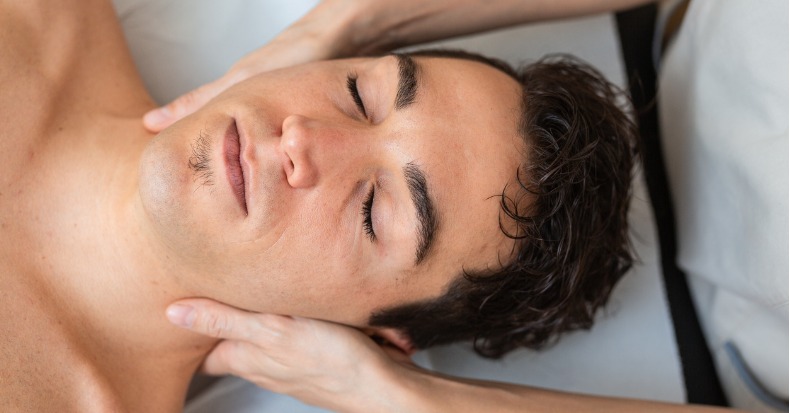Last month, we looked at the published evidence that overwhelmingly supports the use of cervical traction. As promised, this month’s focus is the proper methods of applying it. The type of traction that this discussion will address will be limited to the kind that can be purchased and then used in the home, usually multiple times a day, giving them a clear advantage over in-office traction treatments which can only be applied a few times a week during office visits. In some cases however, it may be appropriate to use the in-office type for a few sessions to determine dosage and/or tolerance prior to administering a home unit, but this varies from case to case, and each type of traction unit is different. For traction of the neck or cervical spine, there are many varieties including: sitting over-the-door types, cervical collar types, as well as supine (lying on the back) types. Each variety has its pros and cons and prices vary considerably from $10 to $600.
CONDITIONS: Probably the most common condition treated with cervical traction is “cervical radiculopathy,” or a pinched nerve. When a nerve root in the neck is pinched, pain, numbness, tingling, and/or muscle weakness occurs in the area the particular nerve innervates. For example, if a patient presents with pain and numbness radiating down the arm to the thumb and index finger and/or have weakness in bending their elbow and extending their wrist, then we know that the C6 nerve is pinched. When pulling or stretching the neck relieves the arm pain, traction is usually helpful. If pain worsens, the person is probably not ready for traction yet.
PROTOCOL (DOSAGE): The key to a successful outcome using cervical traction is finding the right dosage. If you start with too much weight, it may leave you feeling sore, or worse, making you reluctant to try it a second time. Therefore, rather than relying on using a certain percentage of body weight, it’s safest to start with less weight and then gradually increase it, such as 5# (# = pounds or .45 kg) for 15-20 minutes. If that dose feels fine, try 7#/15-20 min., then 9#, 11#, 13#, etc., until you find it just isn’t quite as comfortable at the last weight. You have now found your current threshold and should drop down to the last most comfortable weight and use that for a few days and then MAYBE try increasing it again. Studies show a maximum stretch is usually achieved within 15-20 minutes, so extending the time longer may be less productive. Facing the over-the-door unit may be better tolerated than facing away. Try it both ways and you decide which feels best. The next most important issue is frequency.
How often to repeat the traction sessions depends on the condition’s severity and your response and also your time availability. If there is a severe nerve pinch with muscle twitching, weakness, and dense numbness/tingling, then the traction be repeated MANY times a day, gradually increasing the weight to find the optimum amount. Some people even repeat the traction 10x/day! With the option of wearing a cervical collar traction unit, you can actually travel and/or do certain additional activities during traction. Some people travel to and from work while performing traction! Since each case is unique, discuss this with your doctor of chiropractic. The bottom line: IT WORKS GREAT with proper chiropractic management and in many cases, surgery CAN be avoided!



